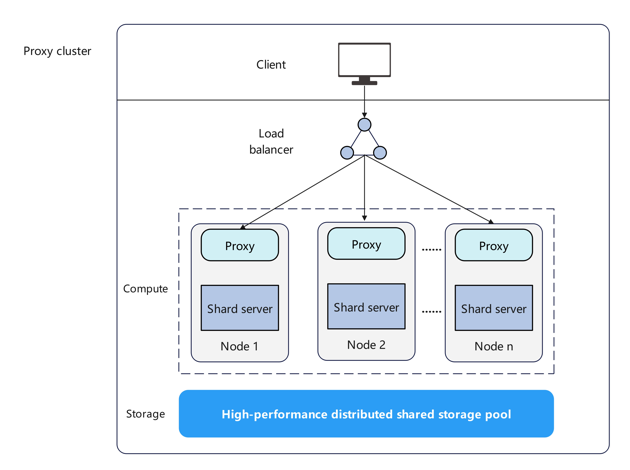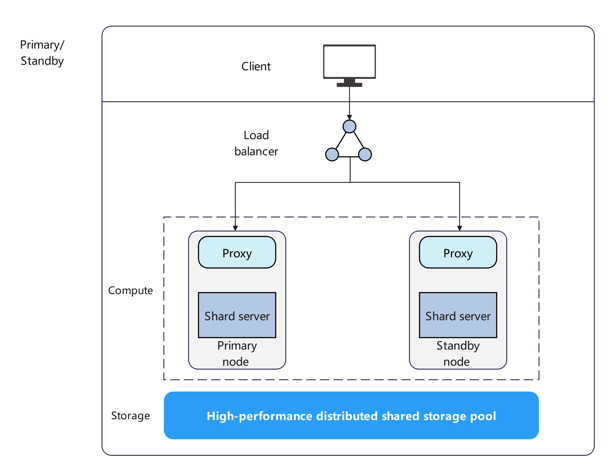Instance Type
GeminiDB Redis API supports the following instance types: proxy cluster, Redis Cluster, and primary/standby.
- Both proxy cluster and Redis Cluster instances support horizontal and vertical scaling and can handle millions of QPS and tens of terabytes of data. Redis Cluster is recommended because it features low latency, high concurrency, and high scalability.
- All proxy cluster and Redis Cluster instances can be read and written, improving resource utilization. Shared storage provides high availability. In the primary/standby architecture, only a primary instance can be read and written. Therefore, the cluster architecture is recommended.
The following table lists architecture types and application scenarios.
|
Type |
Description |
Architecture |
Application Scenarios |
|---|---|---|---|
|
Proxy cluster |
In a sharded cluster, a proxy cluster GeminiDB Redis instance is connected through proxies to a standalone Redis instance, Redis Sentinel, and Redis Cluster. |
For details, see Figure 1. |
|
|
Redis Cluster (recommended) |
With Redis Cluster at its core, a Redis Cluster GeminiDB Redis instance is directly connected to Redis Cluster. |
For details, see Figure 2. |
|
|
Primary/Standby |
A primary/standby instance is compatible with a standalone Redis instance and Redis Sentinel. |
For details, see Figure 3. |
A primary/standby Redis instance can be seamlessly switched to a primary/standby GeminiDB Redis instance. No code modification is required. Cluster instances provide better performance and scalability. They are recommended for new business. |
Feedback
Was this page helpful?
Provide feedbackThank you very much for your feedback. We will continue working to improve the documentation.See the reply and handling status in My Cloud VOC.
For any further questions, feel free to contact us through the chatbot.
Chatbot








